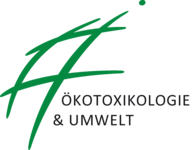A blessing in disguise? Natural organic matter reduces the UV light-induced toxicity of nanoparticulate titanium dioxide
SCIENCE OF THE TOTAL ENVIRONMENT. Bd. 663. 2019 S. 518 - 526
Erscheinungsjahr: 2019
ISBN/ISSN: 0048-9697
Publikationstyp: Zeitschriftenaufsatz
Doi/URN: 10.1016/j.scitotenv.2019.01.282
| Geprüft | Bibliothek |
Inhaltszusammenfassung
Besides their economic value, engineered inorganic nanoparticles (EINPs) may pose a risk for the integrity of ecosystems. Among EINPs, titanium dioxide (nTiO(2)) is frequently used and released into surface waters in the mu g range. There, nTiO(2) interacts with environmental factors, influencing its potential to cause adverse effects on aquatic life. Although factors like ultra violet (UV) light and natural organic matter (NOM) are considered as ubiquitous, their joint impact on nTiO(2)-indu...Besides their economic value, engineered inorganic nanoparticles (EINPs) may pose a risk for the integrity of ecosystems. Among EINPs, titanium dioxide (nTiO(2)) is frequently used and released into surface waters in the mu g range. There, nTiO(2) interacts with environmental factors, influencing its potential to cause adverse effects on aquatic life. Although factors like ultra violet (UV) light and natural organic matter (NOM) are considered as ubiquitous, their joint impact on nTiO(2)-induced toxicity is poorly understood. This study addressed the acute toxicity of nTiO(2) (P25; 0.00-64.00 mg/L; similar to 60 nm) at ambient UV light (0.00-5.20 WUVA/m(2)) and NOM levels (seaweed extract; 0.00-4.00 mg TOC/L), using the immobility of Daphnia magna as response variable. Confirming previous studies, effects caused by nTiO(2) were elevated with increasing UV radiation (up to similar to 280 fold) and mitigated by higher NOM levels (up to similar to 12 fold), possibly due to reduced reactive oxygen species (ROS; measured as (OH)-O-center dot radicals) formation at lower UV intensities. However, contradicting to former studies, nTiO(2)-mediated ROS formation was not proportional to increasing NOM levels: lower concentrations (0.04-0.40 mg TOC/L) slightly diminished, whereas a higher concentration (4.00 mg TOC/L) promoted the ROS quantity, irrespective of UV intensity. Measured ROS levels do not fully explain the observed nTiO(2)-induced toxicity, whereas increasing acetylcholinesterase and glutathione-S-transferase activities in daphnids (in presence of 8.00 mg/L nTiO(2) and elevated UV intensity) point towards neurotoxic and oxidative stress as a driver for the observed effects. Hence, despite higher (OH)-O-center dot levels in the treatments where 4.00 mg TOC/L were present, NOM was still capable of reducing nTiO(2)-induced stress and ultimately adverse effects in aquatic life. (C) 2019 Elsevier B.V. All rights reserved. » weiterlesen» einklappen
Autoren
Verknüpfte Personen
- Ralf Schulz
- Mitarbeiter/in
(Institut für Umweltwissenschaften Landau)
- Mirco Bundschuh
- Mitarbeiter/in
(Institut für Umweltwissenschaften Landau)

